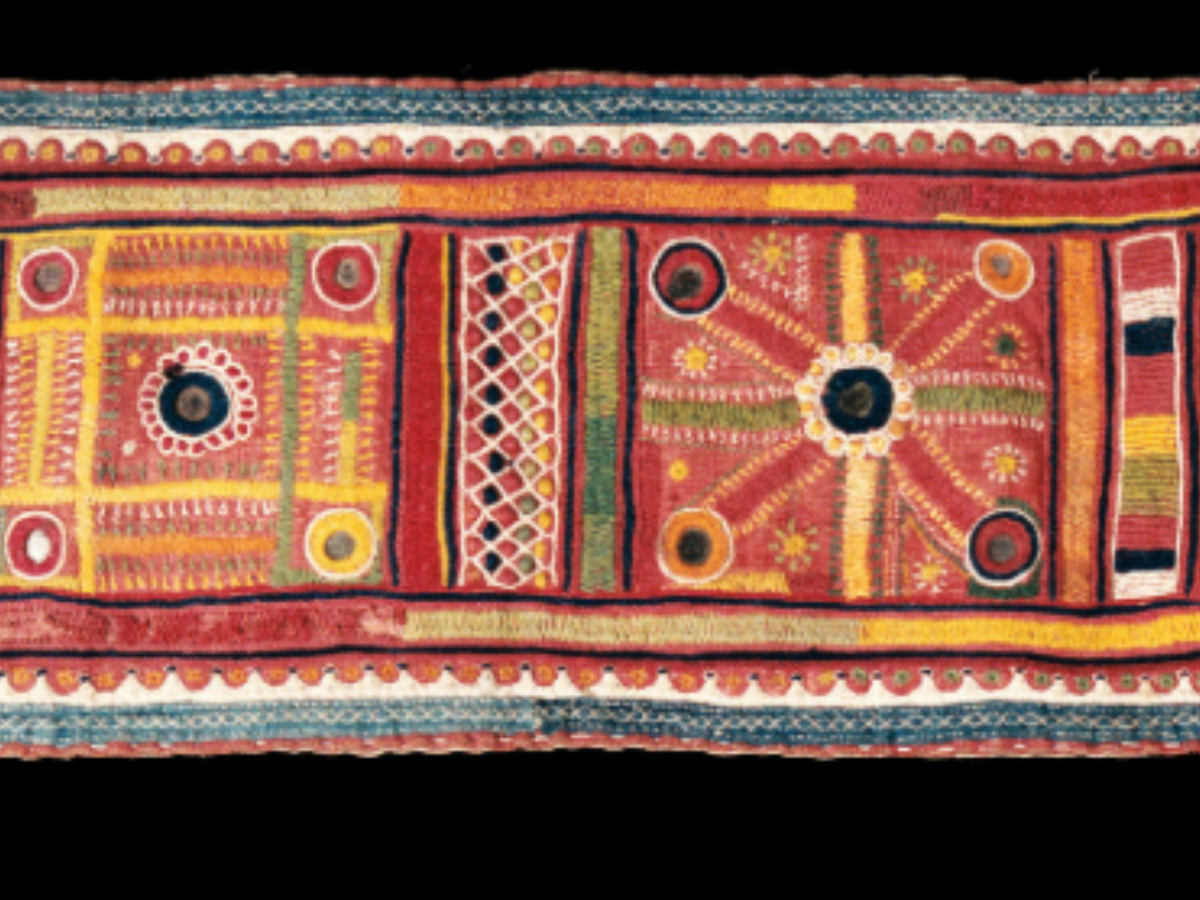State
Tribe Name
Art Type
short description
Amazingly made, this belt is a fine representation of Lambadi tribe craftsmanship, an aboriginal group predominantly found in parts of Karnataka. Banjaras or Lambadi people, are famous for their vibrant and colorful textiles, and this belt personifies the intricate artistic skill and cultural importance of the ornamentation in traditional dressing.
Thumbnail

Filter Postion
Left
Filter Background
Off
Theme
Filter Header Image

content
Image

description
Amazingly made, this belt is a fine representation of Lambadi tribe craftsmanship, an aboriginal group predominantly found in parts of Karnataka. Banjaras or Lambadi people, are famous for their vibrant and colorful textiles, and this belt personifies the intricate artistic skill and cultural importance of the ornamentation in traditional dressing.
This rectangular cotton belt is designed to be worn around the waist, wherein it holds as much significance in function as in form. The outside of the belt is embellished with colorful applique work involving sewing bits of fabric onto the main cloth to form patterns and shapes. Complementing the applique work is the embroidery work, where very fine needlework is performed with bright-colored threads. The combination of these two crafts—applique and embroidery—brings forth a marriage of textures and designs, emphasizing Lambadis' artistic sensibilities through meticulousness and a rich heritage.
For good measure, little mirrors are sewn onto the fabric which also serve as decoration. These little mirrors make the belt glisten but also hold cultural significance: the use of mirrors in Lambadi art and dress to signify prosperity, protection, and good fortune is age old.
Typically, this belt will be worn by the Lambadi in festivals, ceremonies, and daily life as part of their traditional attire. It represents a tribute to the cultural heritage of the tribe, their craftsmanship, and the continued use of vibrant and symbolic materials in their costume.
This rectangular cotton belt is designed to be worn around the waist, wherein it holds as much significance in function as in form. The outside of the belt is embellished with colorful applique work involving sewing bits of fabric onto the main cloth to form patterns and shapes. Complementing the applique work is the embroidery work, where very fine needlework is performed with bright-colored threads. The combination of these two crafts—applique and embroidery—brings forth a marriage of textures and designs, emphasizing Lambadis' artistic sensibilities through meticulousness and a rich heritage.
For good measure, little mirrors are sewn onto the fabric which also serve as decoration. These little mirrors make the belt glisten but also hold cultural significance: the use of mirrors in Lambadi art and dress to signify prosperity, protection, and good fortune is age old.
Typically, this belt will be worn by the Lambadi in festivals, ceremonies, and daily life as part of their traditional attire. It represents a tribute to the cultural heritage of the tribe, their craftsmanship, and the continued use of vibrant and symbolic materials in their costume.
Image Mode
landscape
promoted
On
Verified
Off
